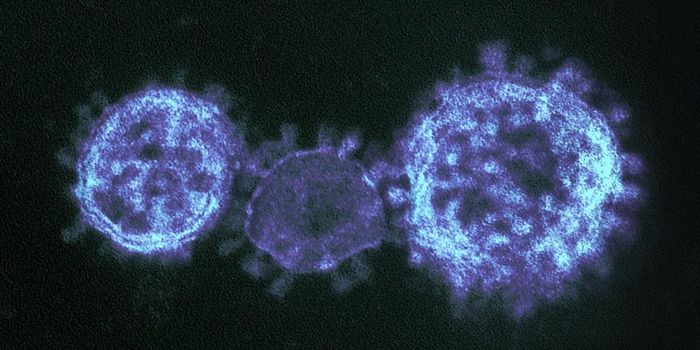Listeria gets a pretty bad rap. And I’ll be honest, it probably deserves it. This is what happens when you are one of the most virulent causes of food poisoning in the world. Still, I think Listeria is a pretty neat organism, you should too.
Listeria monocytogenes is a species of Gram-positive, facultative anaerobic bacteria. These bacteria can grow inside of its host’s cells - a trait that probably helps it avoid the immune system and spread throughout the body. As a pathogen, it causes a condition called listeriosis. Transmission usually occurs orally - typically by eating contaminated foods. Think your refrigerated goods are safe? Nope. These bacteria are hardy and can survive freezing. They can even grow (slowly) in the refrigerator. Ok, back to the disease. Once the bacteria make it to your intestines, they can cause gastroenteritis - a fancy word for food poisoning.
Once you have food poisoning, the bacteria exit the intestines and make their way to your bloodstream. From here, Listeria can infect the central nervous system, a condition that can be fatal. You’ve probably heard that pregnant women should be especially wary of Listeria. That’s because the infection can cause miscarriage and stillbirth.
So, we know how the bacteria get into your gastrointestinal tract, how exactly do they get into your bloodstream? Well, Listeria is pretty crafty. The bacteria use two proteins, InlA and InlB, to attach to cadherin on the epithelial cell membrane (see image). Once inside the host cell, the bacteria find themselves enclosed in a vacuole, which they escape from using listeriolysin O (LLO). LLO punches holes in the vacuole’s membrane by altering the pH. Now the bacteria are free in the host cell cytosol.
The bacteria don’t just hang out in one cell, however. Once they’ve worn out their welcome, they move on to a neighboring cell. (Ultimately, they end up inside a phagocytic cell and become bloodborne.) To travel from cell to cell, they use what’s called actin motility. Basically, they shoot from one cell to another on an actin rocket! (See, told you they were neat!) The bacteria use a protein called ActA that nucleates the actin tail using the host cell’s own actin.
How do you avoid contracting Listeria? Wash your fruits and veggies, for starters. Beyond that, be aware that unpasteurized foods - milk and cheeses like feta and brie - can carry the bug. One of the most recent Listeria outbreaks involved Blue Bell Ice Cream. (Remember, these hardy bacteria can survive the freezer!)
But, what happens if you do get sick? Most people with mild cases of gastroenteritis do just fine. The problems occur when the bacteria make it to the central nervous system. There, they can cause listeric meningitis. In such cases, the mortality rate can be as high as 70%. Antibiotics can treat the average infection, but researchers are always looking for the next best thing, and some are toying with using a bacteriophage to kill Listeria. The phage, called P100, could be applied to fruits and vegetables, for example, killing the bacteria before you have a chance to ingest it.
Last but not least, I’ll leave you on a positive note. Despite its shortcomings, Listeria shows promise as a component of a cervical cancer vaccine. The vaccine, known as Lovaxin C or the cryptic ADXS11-001, was developed by Advaxis and contains live, attenuated Listeria. This particular strain of Listeria, however, was engineered to produce a tumor antigen. The antigen, combined with the presence of Listeria, may excite the immune system enough to attack cancer cells.
Sources: NPR,
Microbiological Reviews,
Molecular Microbiology, Wikipedia









